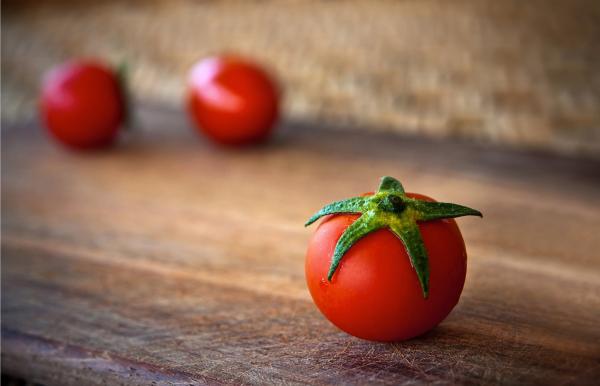Britain's anti-GMO groups are none too pleased following news that the UK is poised to allow farmers to grow a gene-edited tomato engineered to produce higher levels of vitamin D. The country's Department for Environment, Food & Rural Affairs (DEFRA) called for updated regulations last year that would exempt gene editing from England's excessive restrictions on genetic modification. If Parliament passes legislation introduced this week, the gene-edited tomato could be among the first of such crops grown and sold in the UK.
This is a long-overdue step toward science-based genetic engineering regulations in England. The country has every reason to persevere, despite the objections of a few loud and misinformed activist groups.
25 years in the making
The story of Europe's devolution into an anti-GMO stronghold is a long, complicated tale. See my December 2021 report for the London-based Adam Smith Institute—Splice of Life: The case for GMOs and gene editing— for more details, but the gist is this: Following the destruction of two World Wars and the advent of postmodernism and modern environmentalism, Europe developed an allergy to science and technology. This drove the continent to reflexively reject transgenic (GMOs) crops in the 1990s and their gene-edited counterparts later on. [1]
The UK wised up to this technology rejectionism following Brexit and began revamping its genetic engineering rules. This vitamin-D producing tomato is just one of the many useful biotech products England's plant-breeding wizards could commercialize if given the regulatory green light.
Vitamin-enhanced tomato
Research has linked vitamin-D deficiency to suppressed immune function, inflammation, cancer, Parkinson’s disease, as well as depression, neurocognitive decline, and even dementia. We can get vitamin D via sun exposure, balanced nutrition, and supplementation, but many people can't or won't take advantage of these sources. In the UK, one in six people is vitamin-D deficient; globally, roughly one billion people don't consume enough vitamin D.
Fortifying widely consumed produce gives people greater access to a vital micronutrient without forcing any behavioral changes, which we don't know how to do at the population level anyhow. This was the rationale underlying Japan's recent approval of a tomato that reduces the risk of hypertension.
How did researchers engineer this latest souped-up crop? Tomato plants naturally produce an enzyme called 7-dehydrocholesterol (7-DHC), from which humans can synthesize vitamin D. But this enzyme accumulates primarily in the leaves of tomato plants, which we don't eat.
Using CRISPR–Cas9, scientists led by the UK-based John Innes Center knocked out the activity of another enzyme called 7-DR2that converts 7-DHC to cholesterol and other hormones in tomatoes. Gene-edited plants carrying this mutation yielded fruit that accumulated higher levels of 7-DHC. They confirmed that the edited plants could convert this increased 7-DHC to vitamin D by exposing them to UVB light. Results:
“A medium-size tomato has a dry weight of about 8–10 g, and the levels of vitamin D3 that could be achieved in one Sl7-DR2-mutant tomato approach 30% in green fruit and 20% in red fruit of the recommended daily allowance (RDA) … Vitamin D3 in ripe fruit might be increased further by extended exposure to UVB, for example, during sun-drying. ”
As a bonus, the leaves of these mutant plants could also be "rich sources" of vitamin D for animal feed and vegan-friendly supplements. The best sources of vitamin D are animal products like dairy and fish.
Is it safe?
Critics of gene-editing are wont to complain that tweaking plant genetics in this fashion may introduce unintended changes ("off-target edits") that could have serious health and ecological consequences. "Mistakes happen,” Liz O'Neill, director of the activist group, GM Freeze, told the BBC. “Other changes can get made. Genetics is not like Lego. It is a new set of techniques, and it has developed very quickly which means that there is an awful lot that could go wrong.”
Mistakes certainly happen, but O'Neill is incorrectly generalizing from particulars. By way of comparison, pilots on rare occasions crash their planes. But that tragic outcome doesn't negate the fact that flying on a commercial airline is one of the safest ways to travel today.
The same rule applies to plant breeders. They make mistakes occasionally, though we've consumed the fruits of their labor (Get it?) for many years without experiencing any severe consequences. John Innes Center's new tomato is a perfect example. “No off-target edits of the Sl7-DR1 gene were detected in these mutant lines … Loss of Sl7-DR2 activity had no effect on the growth, development or yield of the tomato lines,” the researchers wrote.
Conclusion
The UK watched for years as nations around the world employed genetic engineering to great effect. Britain is now taking a more sensible approach by listening to its scientists, who are eager to introduce new tools that will benefit both farmers and consumers. Here's hoping the country's activist rabble-rousers won't derail this important progress.




